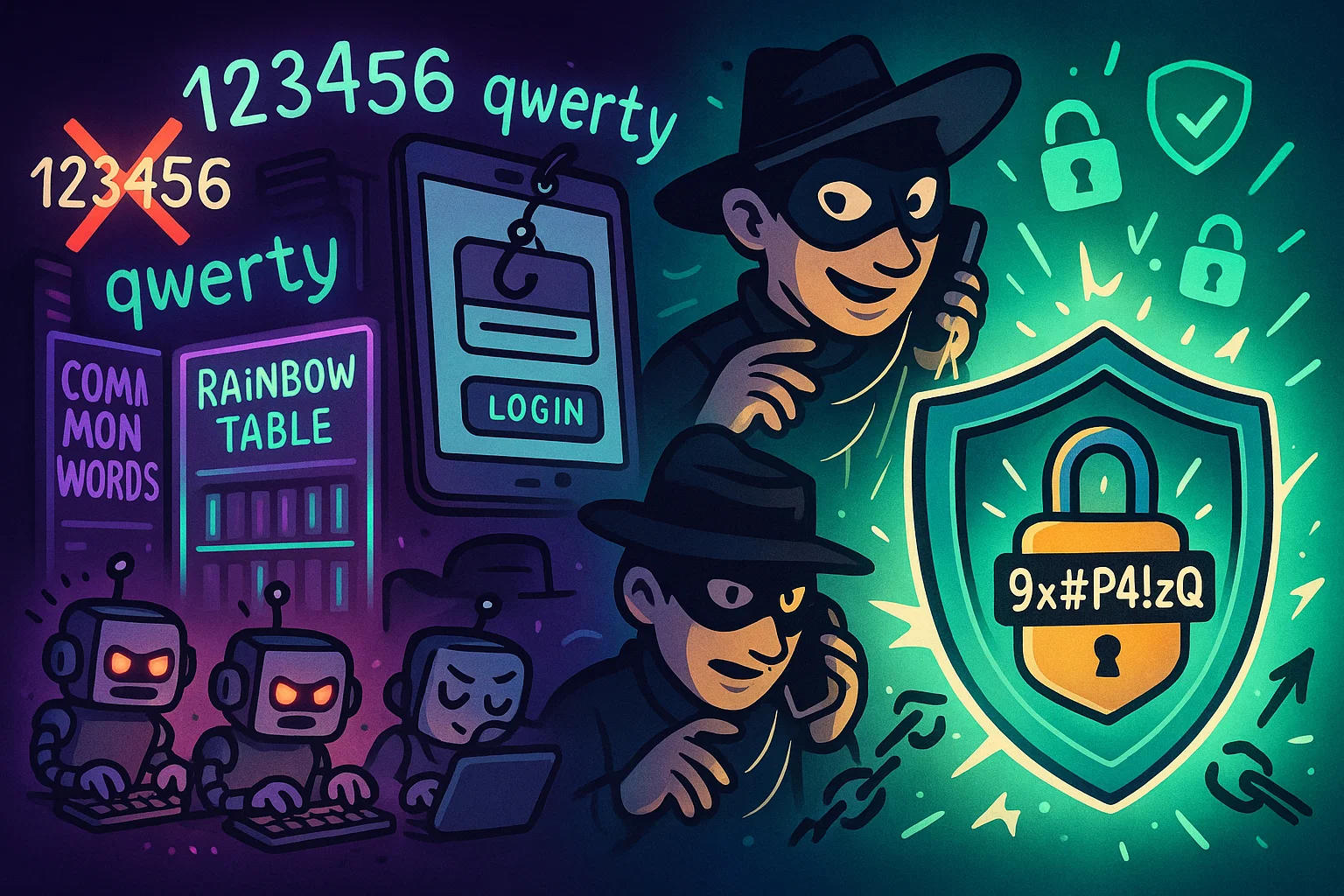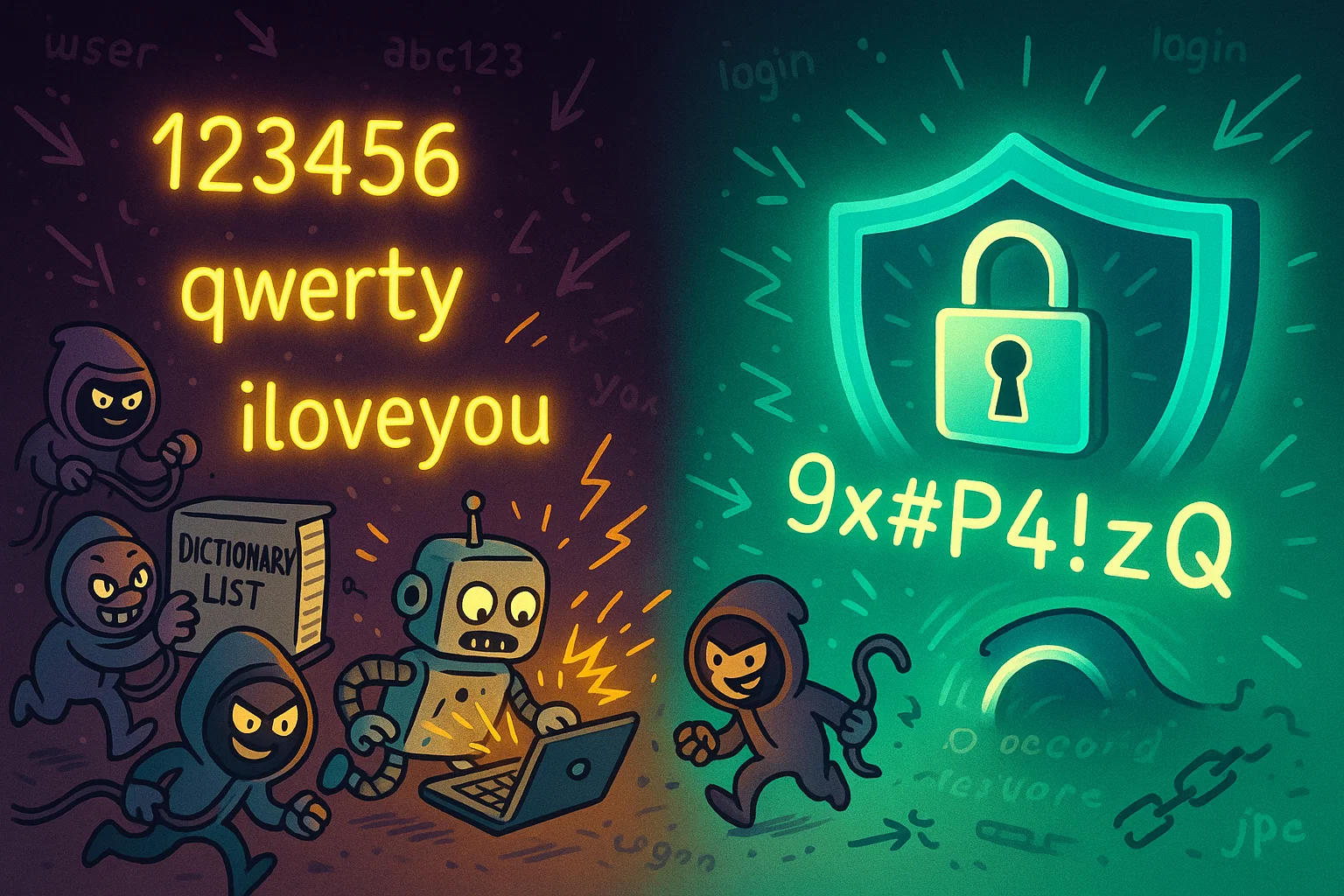One of the simplest yet most effective ways to protect your accounts is by using a strong password. To create complex and secure passwords, you can use a password generator.
Why Simple Password Isn’t Safe Anymore
It’s tempting to stick with something easy—maybe your birthday, your dog’s name, or that one word you always use “just temporarily.” But in today’s digital world, simple codes are an open invitation. Cybercriminals don’t guess these manually; they use bots to launch brute-force attacks, running thousands of combinations per second. If you’re using “123456,” “qwerty,” or “iloveyou,” you’re not just vulnerable—you’re already predictable.
In dictionary attacks, bots try common words and phrases from massive lists. Worse, data from old breaches (like the Adobe or Yahoo! hacks) often shows up on the dark web, giving attackers a head start. If you’ve ever reused an old login or recycled part of a phrase, it’s like handing out a spare key.
The reality? Convenience can cost you everything. And randomness is your best friend. For other ways to boost digital unpredictability, try our Random Number Generator — useful for everything from coding to security practices.
How Hackers Break In
You might imagine a hacker furiously typing strings of code to break into your account, but in reality, most breaches are almost boringly methodical. The most common method? Brute-force attacks—automated scripts that run through millions of combinations until they find the right one. The shorter or more predictable your login, the faster it falls.
Then there are dictionary attacks, which don’t start from scratch. Instead, they test real words and phrases that people commonly use—like “letmein,” “summer2023,” or “football.” Add a capital letter and an exclamation mark? Sorry, that’s still guessable.
🧠 Did You Know? Jurassic Park mocked security with the iconic “You didn’t say the magic word!” scene—while a whole system stayed locked behind a single code.
One of the most advanced methods is the rainbow table attack, where hackers use massive databases of pre-calculated hashes to reverse-engineer encrypted data. It’s like having a cheat sheet to your secrets.
But here’s the kicker: not all hacks are technical. Social engineering is when someone tricks you into giving up access willingly—maybe through a fake email, a spoofed call, or a fake login page. You’d be surprised how often this works, even on professionals.
And remember, using the same access key in multiple places is like using the same key for your house, car, and mailbox. One breach opens them all. To understand the importance of unpredictability, try experimenting with our Random Alphabet Generator. It’s a simple way to see what true randomness looks like.

What Does a Strong Password Look Like?
A secure digital key isn’t just about throwing in a few symbols or adding your birth year at the end. A truly strong one follows a few essential principles—and unfortunately, most people skip them.
So, what makes it solid?
-
Length matters: Aim for at least 12–16 characters. The longer, the better.
-
Mix it up: Use a combination of uppercase and lowercase letters, numbers, and special characters.
-
Avoid patterns: “John2024!” might look complex, but it’s built on predictable parts.
-
No personal ties: Birthdays, pet names, or favorite bands? Hackers love that kind of info.
The ideal version looks like nonsense to a human—but that’s exactly the point. The less guessable, the more powerful it is.
And here’s a surprising truth: adding randomness is more effective than complexity. Instead of trying to remember something clever, consider using unrelated words or strings. It’s easier to defend, even if it’s harder to recall.
Want to see what randomness looks like in action? Our Random Name Picker is a fun way to explore how unpredictable combinations can be—great for games, projects, or even login ideas.


